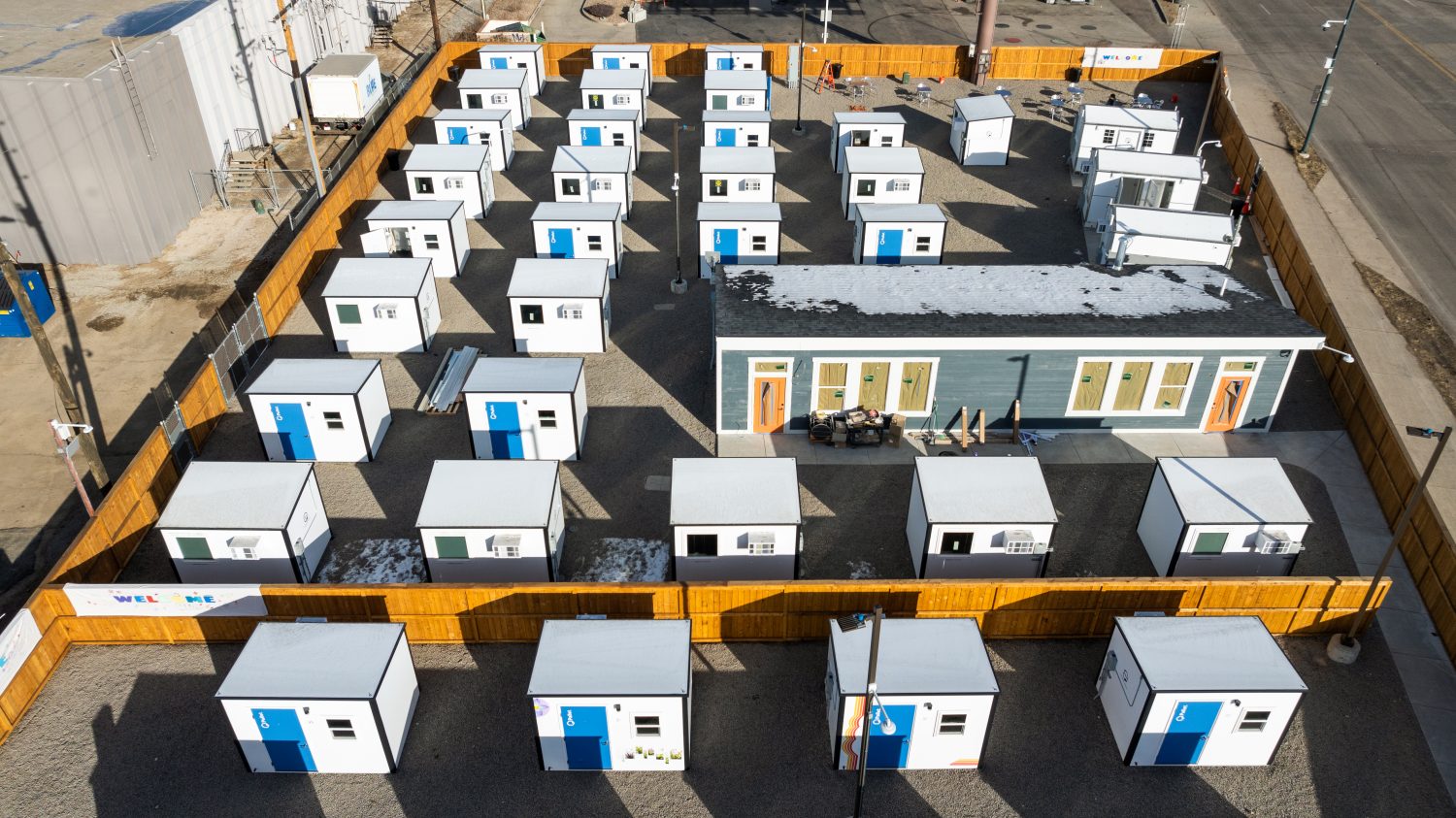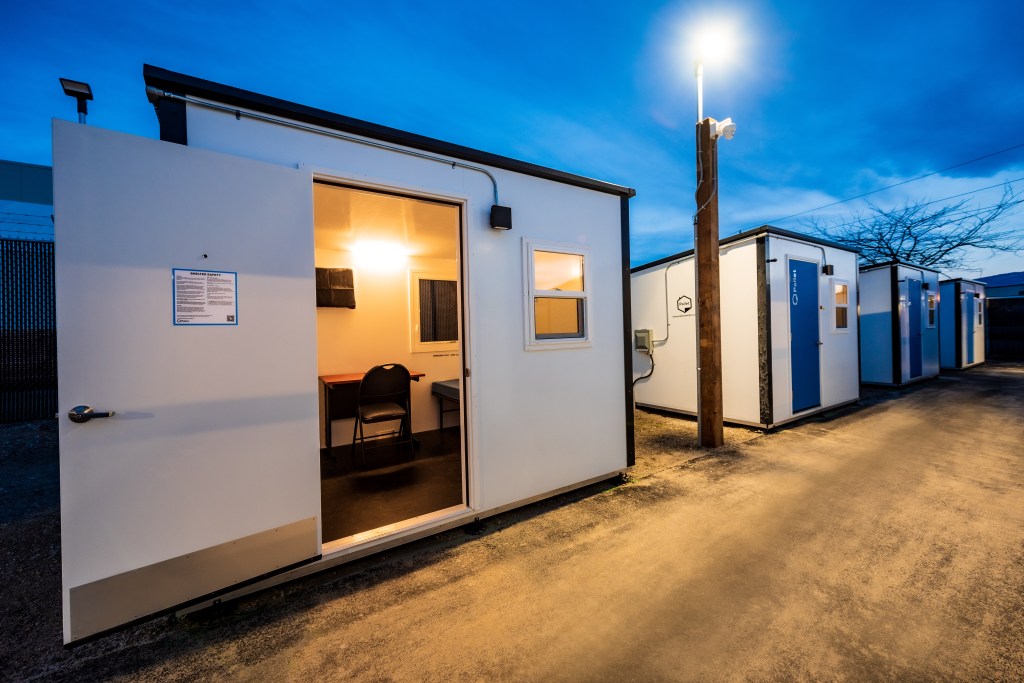
Pallet Shelter

Audio By Carbonatix
The Dallas City Council is looking outside of city limits for new strategies to combat chronic homelessness.
The Housing and Homelessness Solutions Committee gathered Tuesday for the first time since Dallas Mayor Eric Johnson announced new committee assignments at the end of August. The newly appointed chair of the committee, Council member Cara Mendelsohn, said she hopes the afternoon’s briefing on the ways other cities are getting the unhoused off the streets will start a process that could eventually bring new methods of care to Dallas.
Two groups, Pallet Shelter and Our Calling, introduced two different tiny home village models that can be used to create short- or long-term housing villages for the chronically homeless. The briefing came as the city continues to face increased scrutiny about the handling of encampments and downtown homelessness. While the city claims to have ended downtown homelessness, its definition isn’t as literal as some Dallasites would expect or hope.
“The data doesn’t match,” said Mendelsohn. “Every shelter is telling me we’re full. Not just that we’re full, we’re using overflow space.”
When news happens, Dallas Observer is there —
Your support strengthens our coverage.
We’re aiming to raise $30,000 by December 31, so we can continue covering what matters most to you. If the Dallas Observer matters to you, please take action and contribute today, so when news happens, our reporters can be there.
The first briefing was by Patrick St. Mary, a representative for Pallet Shelters. The company has deployed prefabricated shelters in 120 cities, and St. Mary said the most successful villages see around 60% of tenants transition to permanent housing after staying at the shelter. Tenants typically stay in a unit for six to 12 months, and the most basic home is around 70 square feet, with enough room for a single bed and a desk area.
Hygiene facilities, wraparound services and meal areas are offered on site. If brought to Dallas, the city would likely pay up-front costs for the shelters (around $1.2 million per 50 units) while an operator would be brought on to manage the facility and annual operating costs. Existing villages across the U.S. range in size from six to 200 units.

Pallet Shelter
During the second briefing, Wayne Walker, CEO of the faith-based organization Our Calling, outlined plans for a privately funded, permanent-housing village under construction in Ellis. The project’s first phase, made up of 25 tiny homes, is expected to open by the end of the year. The full project is expected to total 500 homes, with medical care facilities, a grocery store, a library, coffee shops and other services also operated on the 280-acre campus.
Walker said he would like to have built the facility in Dallas, where the need is high, but that the bureaucracy of City Hall often dissuades service providers from operating there.
“We knew we’d be sitting in this room for years to get it approved if we tried to do it in Dallas County,” he said. “Dallas is a lot more progressive now than it was three years ago when we started raising funds for this, and so maybe now’s the time. We’d love to support and even help be a part of a tiny home community in Dallas.”
It isn’t often Marilla Street gets called out for its red tape directly to its face, but Walker wasn’t exactly off base in his assessment — even though Dallas has made tiny homes work before.
In 2016, the Cottages of Hickory Crossing opened near the spot where Interstate 30 crosses Interstate 45. The village is made up of 50 tiny homes that offer housing to those with a record of homelessness, mental illness, drug abuse and incarceration. The city only had to contribute $1 million to help the mostly philanthropically funded project get off the ground. The cottages have continued to operate even after the 2024 shuttering of the nonprofit CitySquare, which operated the property, CandysDirt.com reports.
Even still, it isn’t a model the city has been able to replicate time and time again.
The horseshoe last considered the tiny home strategy in 2023, when funding from the Department of Housing and Urban Development was dropped into the city’s lap. Federal funding, however, often comes with specific guidelines, and as the council delved into the appropriations, it seemed the money couldn’t be used to fund pallet shelters or tiny home construction, even as council members voiced support for the ideas.
“Philosophically, I would like to see us look at more transitional-type housing that could help fill in the direction we were hoping to be able to go,” said Council member Gay Donnell Willis, who is serving on the council’s HHS committee this term.
These types of developments face an uphill battle, even if council members hope to move forward on a plan to bring more types of housing support to the city. For a pallet shelter village, the city would need to find an operator willing to take on the facilities and manage annual funding. For both types of projects, there is sure to be debate over where to locate a village within city limits.
And even though it’s a well-known fact that the amount of money spent on a person in and out of shelters, requiring medical care, and brushing up on the legal system far exceeds the cost of a person housed in a shelter, Marilla Street doesn’t exactly have any piles of cash lying around for a new project.
But if there was one takeaway from Tuesday’s briefing, it was this: across the United States, other cities are finding ways to make these types of programs work. Pallet Shelter’s most recent village opened in Amarillo, comprising 45 homes. Why not Dallas?
“I think we need to consider the people that we’re trying to serve as neighbors. I think if your neighbor was hurting, you would show up and serve them,” said Walker. “It will take courage from (the council) to vote and do the right thing regardless of how many squeaky wheels are on the fence.”